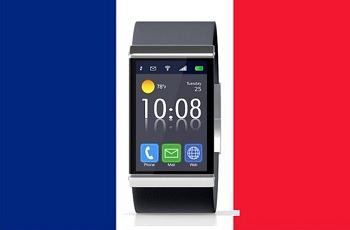Denny |
December 24, 2014
Germany will also be stepping ahead of the United Kingdom when it comes to corporate adoption of wearables.
Ipswitch has recently released the results of a survey that found that Germany and France will be leaps and bounds ahead of the United Kingdom next year with regards to their intentions of using wearable technology within corporations.
The survey examined the number of wearables that will be integrated into the workplace over the next year.
The Ipswitch research looked into the use of wearable technology that will be connected with the corporate IT infrastructure in a number of different countries and organizations. It found a number of different types of insight, such as the indication that there has been little thought given to mobile security and network performance as a result of this integration. Only 13 percent of the participating organizations in the study stated that they had formed a policy in order to cover the impact and management of wearables as they enter the workplace.
German and French businesses are adopting wearable technology at a rate that is faster than the United Kingdom.
 What the research determined was that 33 percent of companies in Germany stated that they plan to bring wearables that are company owned into their workplaces within the next year. In France, that figure for 2015 was 34 percent. In the United Kingdom, about 25 percent of participating businesses claimed that they had similar intentions for the tech.
What the research determined was that 33 percent of companies in Germany stated that they plan to bring wearables that are company owned into their workplaces within the next year. In France, that figure for 2015 was 34 percent. In the United Kingdom, about 25 percent of participating businesses claimed that they had similar intentions for the tech.
Beyond the investigation into the corporate adoption of wearables, this research also examined the attitudes that companies have with regards to employee owned gadgets entering the workplaces. Among the respondents, 36 percent said that they believed that they would be experiencing an “influx” of the number of employees who would be wearing smartwatches and other similar mobile devices in 2015.
In terms of employee owned wearable technology use, it was German businesses that expected to see the highest increase in the devices. Among the respondents from that country, 41 percent were expecting this nature of influx next year. In France, it was 36 percent and it was 33 percent in the United Kingdom.
This wearable technology has been designed to be easier to use and more durable than previous versions.
As mobile technology becomes increasingly child friendly and kids become smartphone owners on a rapidly expanding basis, it also makes sense that wearable technology such as the smartwatch would also cater to the youngest demographic.
Though Pebble, Moto 360, and Samsung Gear may not be appropriate, there are several models meant just for kids.
Among them, AT&T has been selling the FiLIP 2, which is an upgraded version of the model that was first released last year. That smartwatch was meant to function as a phone that is worn on the wrist and that also works as a child locator for parents who are worried that their kids will go missing through miscommunication or other circumstance that can cause a child to end up somewhere that he or she should not be. So far, this year’s version has been receiving applause from the first consumers who have had their hands – and wrists – on these devices.
The newest version of this smartwatch is easier for parents to set up and is more practical in the real world.
The FiLIP 2 is meant to be simpler for parents to connect to their own smartphones through mobile apps, and is improved for use in the real world. For example, the screen on this wearable technology is now considerably more durable than the previous version, which is important when worn by children, who are notoriously hard on their belongings – particularly when they are being worn in the playground.
The wristband has also been improved in order to make it more adjustable for a better fit – even after the child has grown – and more comfortable overall. This was a complaint about previous models, as the wristband was not able to change sizes in order to allow for children to get bigger over time.
Though this device isn’t cheap, at a current price of $100 (which will be increasing to $150 after the end of the holiday shopping season), in addition to $10 per month to add this smartwatch to an existing phone plan (meaning that by the end of next year, more will have been spent on connecting it to the phone plan than was paid for the device, itself), it does have a range of features that many parents and kids find highly appealing, if only the peace of mind of always knowing where the child is located.
 What the research determined was that 33 percent of companies in Germany stated that they plan to bring wearables that are company owned into their workplaces within the next year. In France, that figure for 2015 was 34 percent. In the United Kingdom, about 25 percent of participating businesses claimed that they had similar intentions for the tech.
What the research determined was that 33 percent of companies in Germany stated that they plan to bring wearables that are company owned into their workplaces within the next year. In France, that figure for 2015 was 34 percent. In the United Kingdom, about 25 percent of participating businesses claimed that they had similar intentions for the tech.
